Understanding the Oracle Access Manager Use Cases
The following uses cases illustrate common Oracle Access Manager process flows:
Single logout for any these of these use cases can be implemented in many ways. The logout for federation use cases must have a link in the partner portal for the following URL:
http:<sphost>:<spport>/opensso/saml2/jsp/spSingleLogoutInit.jsp?metaAlias= <metaalias>&idpEntityID=<idp entityid>&RelayState=<integrated product logout url> |
Single logout can also be achieved using Identity Provider-initiated single logout.
Simple Single Sign-On Use Case
Simple single sign-on integration is useful when an Oracle Access Manager instance is already deployed and configured to protect intranet enterprise applications. Additionally, OpenSSO Enterprise is deployed to protect the same intranet applications by honoring the user session obtained by Oracle Access Manager. In the following illustration, both OpenSSO Enterprise and Oracle Access Manager share the same user repository for user profile verification. OpenSSO Enterprise can also be configured to use the Ignore Profile option if it relies on the Oracle Access Manager session for attributes.
The following figure illustrates architecture in the simple single sign-on use case.
Figure 3–1 Simple Oracle Access Manager Single Sign-On
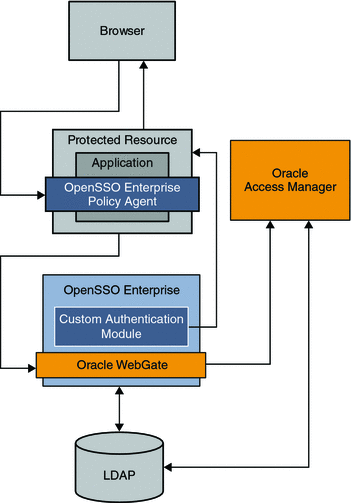
The following figure illustrates the process flow among components in the Identity Provider environment and Service Provider environment.
Figure 3–2 Process Flow for Simple Oracle Access Manager Single Sign-On

Federated Single Sign-On Use Cases
The SAML, ID-FF, and WS-Federation protocols provide cross-domain single sign-on among multiple trusted business entities. These protocols are also used in Identity Federation. Identity Federation involves an Identity Provider, also known as an authentication provider, and a Service Provider where the user authentication session at the Identity Provider is consumed. The following are common use cases in which Oracle Access Manager is enabled for federation protocols:
-
Enabling Oracle Access Manager for federation protocols in a Service Provider environment
-
Enabling Oracle Access Manager for federation protocols in an Identity Provider environment
The deployment examples in this chapter are built upon simple single sign-on integration. You must set up single sign-on before enabling federation. For more information about setting up simple single sign-on, see the Deployment Example: Single Sign-On. After setting up simple single sign-on, you can enable Oracle Access Manager for Federation in either the Identity Provider environment or in the Service Provider environment.
In the following examples, both Identity Provider and Service Provider are configured for transient federation. In most use cases, bulk federation is configured between the Identity Provider and Service Provider.
In transient federation, users exist only in the Identity Provider environment. The Service Provider honors the user authentication at the Identity Provider, and then creates an anonymous session. The anonymous session enables the Service Provider applications, protected by single sign-on, to be accessed. During SAML interactions, there is a possibility of exchanging user attribute information back to the Service Provider for authorization and other purposes. But that scenario is beyond the scope of this document.
Using OpenSSO Enterprise to Enable Oracle Federation in an Identity Provider Environment
In this example, Oracle Access Manager is the authentication provider in an Identity Provider environment and protects some of the intranet applications. OpenSSO Enterprise in this deployment resolves the single sign-on issues among enterprise applications in partner environments while Oracle Access Manager provides authentication.
Figure 3–3 Oracle Access Manager Federation in an Identity Provider Environment
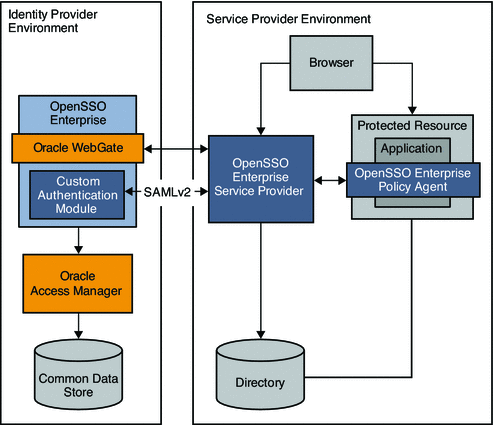
The following two figures illustrate the process flow among components in the Identity Provider environment and Service Provider environment.
Figure 3–4 Process flow for Oracle Access Manager Federation in an Identity Provider Environment
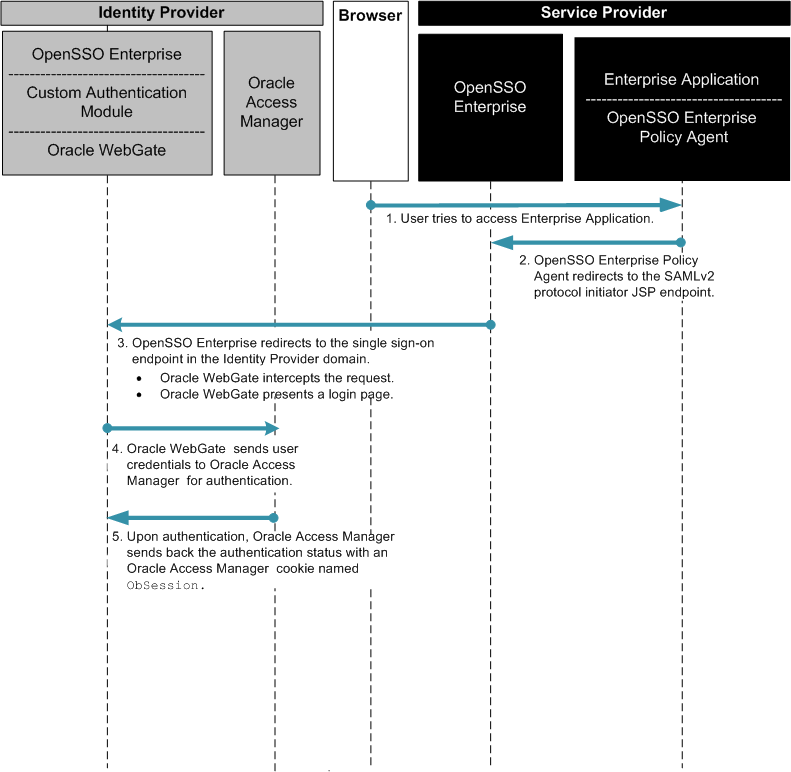
Figure 3–5 Process flow for Oracle Access Manager Federation in an Identity Provider Environment (continued)
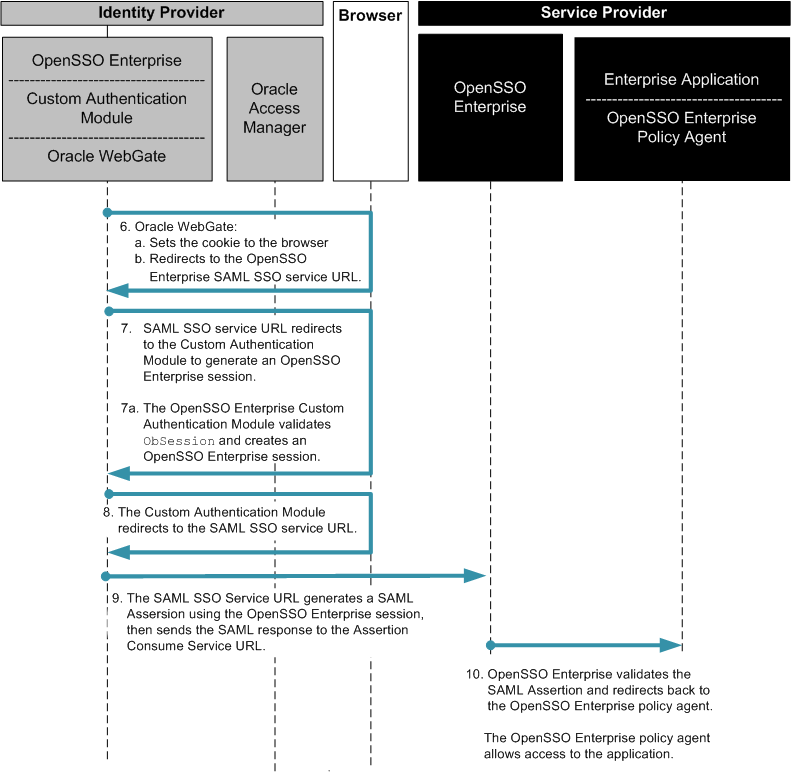
Using OpenSSO Enterprise to Enable Oracle Federation in a Service Provider Environment
In this deployment, Oracle Access Manager is installed and configured in Service Provider Environment to protect legacy applications.
Figure 3–6 Oracle Access Manager Federation in a Service Provider Environment

The following two figures illustrate the process flow among components in the Identity Provider environment and Service Provider environment.
Figure 3–7 Process Flow for Oracle Access Manager Federation in a Service Provider Environment
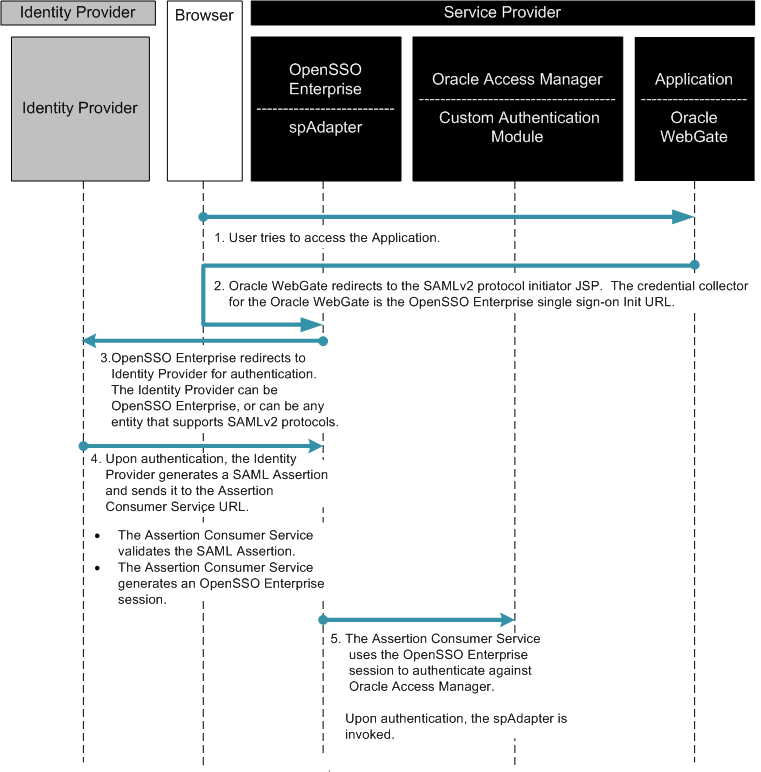
Figure 3–8 Process Flow for Oracle Access Manager Federation in a Service Provider Environment (continued)
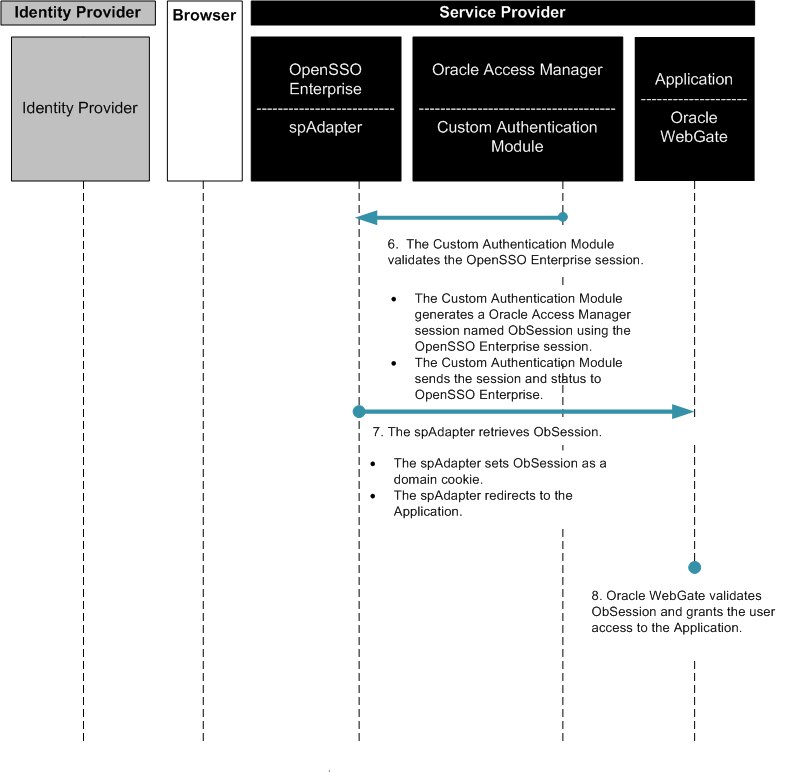
- © 2010, Oracle Corporation and/or its affiliates
